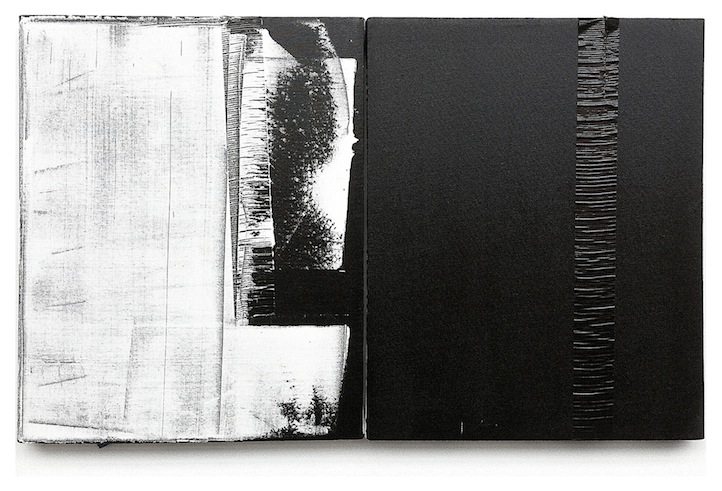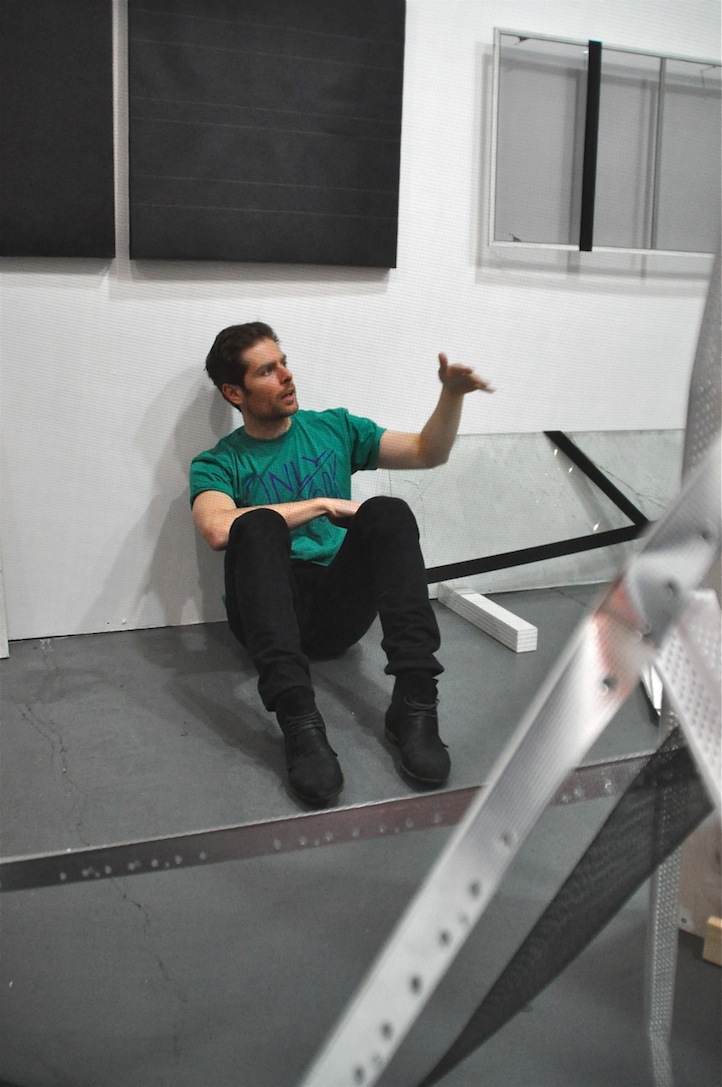Visual Artist Jay Paavonpera Speaks On New Paintings and Creating Process
03.14.2013
ART & DESIGN

Jay Paavonpera, if you ask him, defines himself as a painter, but his works are much more than that. His creations are based upon the principle of understanding how a ‘seemingly’ inanimate object records history and in doing so, points his perspective towards the realms of our existence within both time and space. Here, the Brooklyn based artisan breaks down the thought process behind his craft.
Life+Times: If you had to describe the aesthetic of your work – how would you define it?
Jay Paavonpera: Although my work may seem more easily defined as sculptural or multi-disciplinary, I actually consider myself a painter. I value the history that is carried in the physical presentation of a painting and the way in which we inherently understand and react to its two-dimensional form. In that sense, I am trying to dismantle the assumption of what we expect of the form in which a painting can be presented. So even though my work may appear sculptural upon an initial viewing, my objective is for the viewer to re-evaluate that perception, and instead experience the work in the same way they would experience a painting — acknowledging surface, material, and color, and of course, considering the entirety of its narrative.
L+T: What’s your creative process like? Walk us through it…
JP: My creative process varies based on a thought or narrative that I am drawn to explore. I am interested in poetry and philosophy, so often times the point of origin stems from some form of philosophical argument that grabs my attention. At the same time, I draw an inspired interest in our existence within time, and space, and how we parlay our existence in the form of our conscious and sub-conscious memory. I think these ideas share an inherent attachment to environment, and more specifically, the way in which we manufacture our environments around our existence, and vice-versa. In an effort to underscore these more conceptual thoughts, I create stark, graphic compositions using mundane, ubiquitous, and industrial materials and objects that we unthinkingly choose to surround ourselves with. Hopefully my actions can trigger a new perspective about our relationship to each other and to our manufactured environments.
L+T: You’ve said that your goal, in your work, is to understand and acknowledge the presence of an object in its natural state. What is it about something in its raw form that you find so intriguing?
JP: Right. I am interested in how seemingly inanimate objects record history. I look to understand and acknowledge the presence of an object in its natural state less to understand what the object might or could represent physically or philosophically, and more to understand its history, to question its experience — what it knows, or what it might know — and then parlay that axiom into my work.

L+T: The element of “time” is also an important in your works. How so? Why?
JP: Time is a reflection of existence — a record (of sorts) of our memories. Theoretically, time only exists because we have a reference point — memory — to draw an understanding from. For me, it is important to parlay this narrative of ‘time’ and its fundamental prevalence in every aspect of our interactions in my work. For this reason, a lot of my work will include materials and objects that will alter and degrade over time. There is an interesting story being told and to be told there, and in a way, because of this, the works become equally an historical record and an independent tangent in time.
L+T: What artists are you most inspired by? Why?
JP: Serra, Rasuchenberg, Ryman, and Newman are a continuous source of inspiration. There is a gestural elegance in the way these artists manifest their works physically and philosophically. I kind of get lost in their works and writings. But I think more than anyone, Jannis Kounellis is my greatest artistic influence. He inspires me in so many ways and on so many different cognitive levels. His work appears so simple in its gestural, contemplative intent, but there is an unequivocal consideration of space, material, and existence that resonates far beyond each works presentation. It’s mesmerizing.
L+T: What’s your home like when it comes to the art that is found within its walls? What are your buying/collecting habits?
JP: My girlfriend and I have a uniquely eclectic mix of art that we have accumulated over the years. We have some great pieces by Tomokazu Matsuyama, Douglas Lucak, Conor Harrington, Pat Steir, Robert Maplethorpe, Barbara Mensch, and others, as well as some very special works that I have traded with artist friends, and of course, we have the requisite vintage store finds as well, including a beautiful still-life oil painting from the 40’s. We make a conscious effort together to buy and collect artists and works that we like and want on our walls, as opposed to making decisions based on some kind of proposed investment potential.
L+T: What are you currently working on? What’s coming up next?
JP: Right now I’m working on a series of objects-as-paintings appropriating the rationale for Keats’ theory of Negative Capability. I’m excited for how and where they’ll end up. It is early stages yet, but I am confident they’re headed in the right direction. In June, I will be participating in the Bronx Museum of the Arts AIM Biennial. There is a terrific group of artists this year, and I am looking forward to seeing how the curatorial staff will work to shift the entire exhibition into focus.
L+T: With every piece you create, what are you trying to achieve? What do you want the viewer to take away from your creations?
JP: Ultimately, my intent is to create a gestural statement that will allow the viewer an opportunity to acknowledge the fictional elements of our existence in space, and time, and memory.





